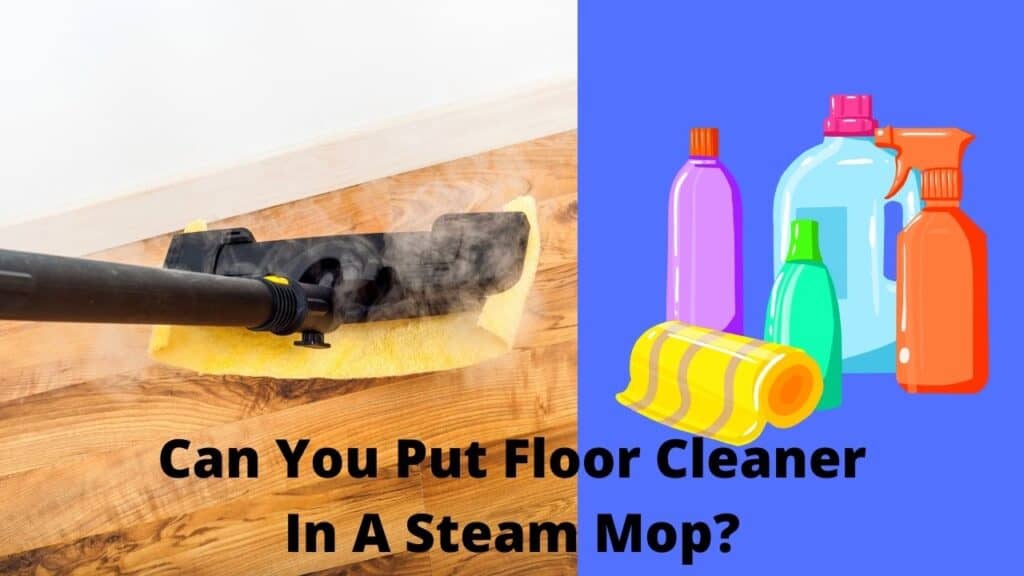Imagine this: you’re relaxing on the couch, a good book in hand, when you hear the gentle whirring of your robot mop diligently cleaning your floors. It’s a beautiful symphony of modern convenience, but a nagging question pops into your mind: can you sprinkle in some of your favorite floor cleaner to give those floors a sparkling shine?

Image: howdoesshe.com
The allure of adding a little extra cleaning power to your robot mop is strong. After all, who wouldn’t want a deeper clean without lifting a finger? However, the world of robot mops is surprisingly complex, and blindly adding cleaning solutions can lead to unforeseen consequences. Let’s delve into the world of robot mops and learn how to safely and effectively keep your floors spotless.
Understanding Robot Mops
The Mechanics of Cleanliness
Robot mops are essentially tiny, autonomous cleaning machines with a built-in water tank and a rotating mop pad. They navigate your home using sensors and algorithms, systematically cleaning hard floors like tile, hardwood, and laminate. But the way they operate varies significantly depending on the model and manufacturer.
Water Reservoirs and Cleaning Systems
Most robot mops come with a designated water reservoir where you can add plain water, sometimes with a few drops of specialized cleaning solution. These solutions are typically formulated to be gentle on flooring materials and compatible with the mop’s internal mechanisms.

Image: tutorclean.com
The Importance of Compatibility
Every robot mop has a specific design and limitations. Using a cleaning solution that’s not explicitly recommended by the manufacturer can cause serious issues. These problems can range from damage to the internal components, clogging of the water reservoir, leaving behind streaks and residue, and even malfunctioning of the sensors and other electrical parts.
Choosing the Right Cleaning Solution
Manufacturer Recommendations Are Key
The first and most important step is to consult your robot mop’s manual. This document contains specific instructions on compatible cleaning solutions and any limitations. Some manufacturers offer their own branded cleaning solutions, which are specifically engineered for their mop’s design.
A Deeper Dive into Cleaning Solutions
If your robot mop manual allows for the use of external cleaning solutions, you have several options:
- Specialized Robot Mop Solutions: These solutions are specifically formulated for robot mops and are often available from the manufacturer or other reputable brands. They are usually pH-balanced and free of harsh chemicals that could potentially harm the mop’s components.
- Diluted White Vinegar: White vinegar is a natural cleaning agent that’s known for its effectiveness on a variety of surfaces. Diluting white vinegar with water (typically a 1:1 ratio) can create a gentle cleaning solution for your robot mop. However, always test a small, inconspicuous area first to ensure it does not damage your floor.
- All-Purpose Cleaners: Some all-purpose cleaners are safe for use in robot mops, but it’s crucial to check the label for compatibility. Choose a cleaner that is specifically marked as “floor-friendly.” Avoid cleaners that contain harsh chemicals, fragrances, or oils, as these can damage the mop’s components and leave streaks on your floor.
Things to Avoid
There are several cleaning solutions that should be avoided at all costs when using a robot mop:
- Bleach: Bleach is a powerful disinfectant but it can be damaging to certain types of flooring, and it can also corrode the internal components of your robot mop.
- Ammonia: Ammonia is also known for its cleaning power, but it can react with other chemicals and create harmful fumes. It can also damage some types of flooring and your mop’s materials.
- Oil-Based Cleaners: Oil-based cleaners can leave a greasy residue behind, making your floor slippery and potentially damaging your robot mop’s internal mechanisms.
- Concentrated Cleaning Solutions: Never use concentrated cleaning solutions in your robot mop. Strong chemicals can damage the internal components, lead to corrosion, and potentially cause malfunctioning.
Tips for Cleaning with a Robot Mop
Here are some useful tips to enhance your robot cleaning experience:
- Pre-Clean: Pick up large debris like toys or clothes before starting your robot mop to prevent clogging or damage.
- Spot Check: After adding cleaning solution, perform a spot test on a small, inconspicuous area of your floor to ensure compatibility and prevent any unexpected reactions.
- Less Is More: When adding cleaning solution, stick to the manufacturer’s recommended measurements. Too much cleaning solution can lead to excessive residue, clogging, and even damage to the mop.
- Maintenance is Key: Regularly clean and empty your robot mop’s water tank, and check the mop pads for wear and tear. This ensures proper functionality and prevents buildup that could compromise the cleaning process.
Can You Put Floor Cleaner In Robot Mop
Conclusion
While the idea of adding floor cleaner to your robot mop for a deeper clean is tempting, it’s crucial to understand the intricacies of these machines. Always prioritize manufacturer recommendations and choose cleaning solutions that are specifically formulated for robot mops. By following these guidelines and practicing safe cleaning habits, you can ensure a sparkling clean home and a long lifespan for your robot mop companion.
There’s a whole world of cleaning solutions and robot mops waiting to be explored. Don’t hesitate to research further and find the perfect combination for your home and cleaning needs. Enjoy the convenience of automated cleaning, but always prioritize the health and longevity of your robot mop!





